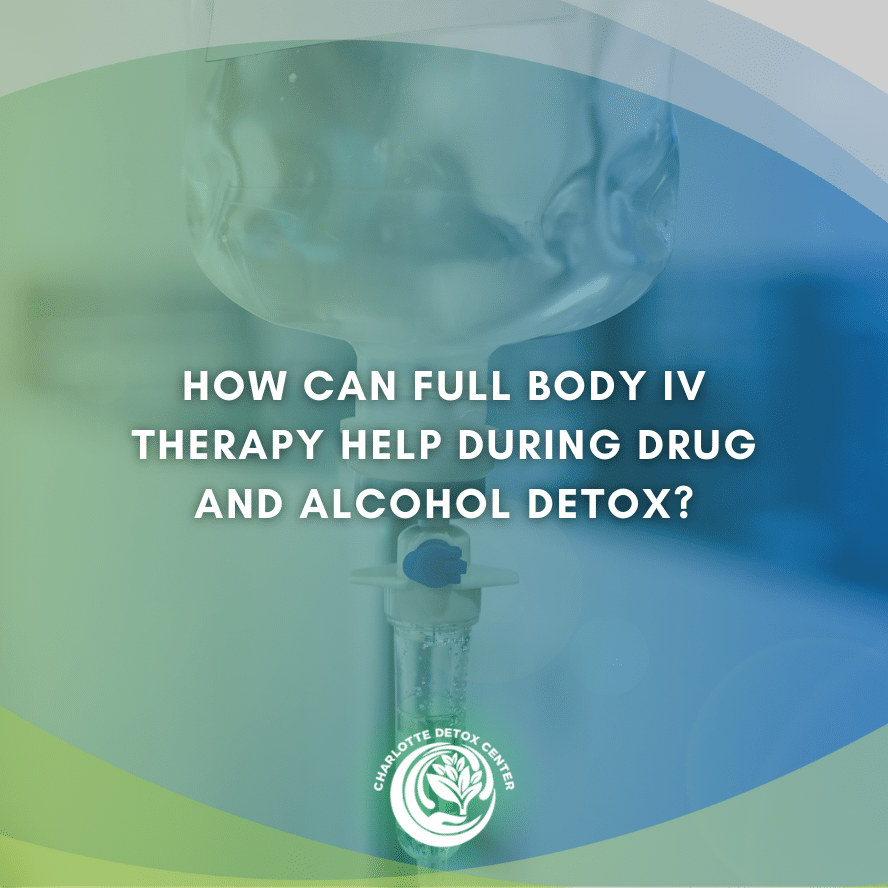How Can Full Body IV Therapy Help During Drug and Alcohol Detox?

Medically Verified: 2/1/24
Medical Reviewer
Chief Editor

All of the information on this page has been reviewed and verified by a certified addiction professional.
Detox is the first step of the treatment and recovery process. Since drug and alcohol withdrawal can be life-threatening, most patients are encouraged to detox under medical supervision at a hospital or addiction detox center. Facilities such as these can prescribe medications and offer 24/7 monitoring to ensure patient safety, comfort, and sobriety.
While detox typically includes medications and medical support, many luxury detox centers offer intravenous detoxification, also known as detox therapy, IV detox, or IV therapy. Full body IV therapy can help purge drugs and other toxins from the body while also replenishing the body’s fluids and nutrients. In the process, it can reduce the severity of withdrawal symptoms, promote sleep, reduce cravings, and energize the body.
Understanding how IV therapy works during drug and alcohol detox can help you decide if IV detox treatment is right for you.
What is Intravenous (IV) Therapy?
IV therapy involves receiving nutrients, amino acids, vitamins, minerals, antioxidants, and even oxygen directly into your bloodstream through an IV. This is not the same as rapid detox. IV therapy happens over time while you are awake and conscious.
Since drug and alcohol abuse depletes the body’s natural storage of vitamins and minerals, it’s important to replenish your body with these nutrients as soon as you get sober. Using IV therapy during detox can even help reduce the severity and duration of withdrawal symptoms.
How is Full Body IV Therapy Used During Detox?
After you check in to your detox facility, undergo your assessment, and arrive at your room, you may have the option of using IV therapy. There are four types of IV detox treatments available:
1. Amino Acid Drips
Amino acids are proteins that help balance neurotransmitters in the brain, such as dopamine and serotonin. These neurotransmitters are often depleted after chronic substance abuse. Amino acid drips slowly replenish the body with essential amino acids so you feel better, have improved cognitive function, and heal from the effects of addiction faster.[1]
2. Antioxidant Drips
Antioxidant drips used during drug and alcohol detox often contain glutathione–a powerful antioxidant. Putting glutathione directly into the bloodstream helps neutralize free radicals that are left behind from drugs and alcohol. Free radicals deplete the body’s natural antioxidants, causing oxidant imbalances and even cognitive impairment.[2] By neutralizing the free radicals in the body, you will detox faster, feel better quicker, and have more energy.
3. Vitamin Therapy
Many people who struggle with addiction are malnourished or undernourished. Those that are vitamin deficient often have a vitamin deficiency of Vitamin A, B6, or thiamine.[3] IV therapy can supply the body with these essential vitamins during detox to help boost the immune system and speed up the recovery process.
4. NAD+ Therapy
NAD+ therapy involves intravenous detoxification with Nicotinamide adenine dinucleotide (NAD). NAD is a naturally occurring co-enzyme that the body uses to produce energy at a cellular level. It is essential for converting food to energy, DNA repair, and even brain function.[4]
Drug and alcohol addiction can seriously deplete the body’s NAD supply. Fortunately, NAD+ therapy supplies the body with NAD via one infusion per day. This can improve energy levels, boost brain function, and help restore and heal the body at a cellular level.
Benefits of IV Therapy for Drug and Alcohol Detox
An IV drip or NAD+ infusions can be extremely beneficial for patients who are detoxing from drugs and alcohol. Benefits include:
- Replenish vitamin deficiencies. Drug and alcohol abuse can lead to depleted levels of vitamins A, B6, and thiamine.[3] Full body IV therapy can help replenish these vitamins.
- Keep the body hydrated. Nausea, vomiting, and diarrhea are all common symptoms of withdrawal, but they can lead to dehydration which can make other symptoms worse. IV therapy makes sure you stay hydrated.
- Promote natural healing. When the body has the vitamins and minerals it needs to be healthy, healing is sped up. Use IV therapy to restore your body’s natural balance.[2,4]
- Reduce depression and anxiety. Certain cocktails can help reduce symptoms of depression, anxiety, and even insomnia.
- Boost metabolism. IV detox treatment can speed up your metabolism so you have more energy and feel better.
While IV treatment is not required during detox, it can make the process much more comfortable.
IV detox treatment is generally safe and complications are extremely rare. The most common side effects include swelling, discomfort, and irritation at the injection site. These symptoms are normal, usually mild, and subside within a couple of days.
Holistic Drug and Alcohol Detox at Charlotte Detox Center
Here at Charlotte Detox Center, each of our patients is given a custom-tailored detox and treatment plan that meets their needs. Our experienced medical staff is trained on all protocols for helping clients detoxify from drugs and alcohol, and clients meet with medical staff daily. Your safety and comfort are our top priority.
Don’t wait any longer for the safe, comfortable, and compassionate treatment you deserve. Call now to speak with a dedicated admissions coordinator about starting your recovery at Charlotte Detox Center.
References:
